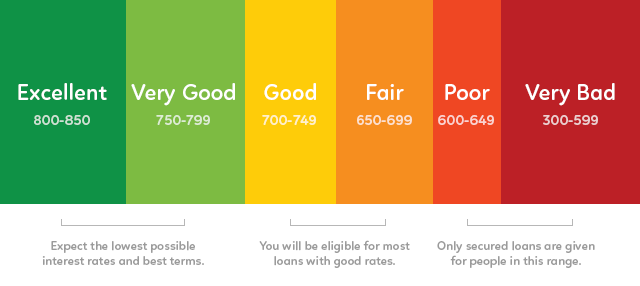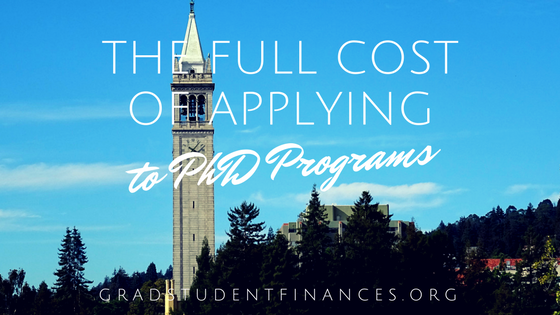Increasing your income as a graduate student can be quite challenging, to put it mildly. Stipends sometimes increase with cost-of-living raises or the student’s advancement to candidacy. Fellowships that pay high stipends are quite competitive. You could take out (additional) student loans to give yourself more spending money, but you’ll pay back all that debt (plus interest) later. Establishing a side income or side gig is not an option for all grad students, and those that do are likely making a significant time investment.
A version of this post originally appeared on GradHacker.
Because their options for earning more money are so constrained, grad students seeking to free up extra cash most often turn to decreasing their living expenses. You can effectively “give yourself a raise” by adopting positive financial habits or practicing frugality. This first post in my “Give Yourself a Raise” series focuses on doing so by evaluating your fixed expenses.
I always encourage people looking to reduce their expenses to consider their fixed expenses first. Your fixed expenses are those that are the same every time they occur, such as your rent/mortgage, minimum debt payments, and certain utilities. You only need to make and carry out a one-time decision to reduce a fixed expense, which will free up additional cash flow for you on a regular basis for months or years to come. While this one-time decision might be difficult to make or implement, in my opinion this is often preferable to trying to reduce expenses by methods that require willpower or time on an ongoing basis.
While any of your fixed expenses could potentially go on the chopping block, those that are largest and/or discretionary are usually the ripest for reduction.
Rent/Mortgage
Housing is usually the biggest monthly expenditure grad students have and therefore should be the first to be examined. We all know how to (potentially) reduce our housing expenses: move to a smaller, further, or otherwise less desirable residence; add one or more roommates; or find a better deal. More creative alternative housing arrangements may also be possible, e.g., house-sitting or serving as a resident advisor.
In this area, graduate students usually don’t have a lack of knowledge of how to reduce their housing expenses but rather may not re-examine their decisions as their priorities, finances, and options evolve or are unwilling to move even when it is warranted. My husband and I went several years during grad school without re-evaluating our housing choice until a rent increase compelled us to. Searching for housing and moving certainly wasn’t easy, but by giving up a few amenities and switching from an apartment in a complex to a privately owned townhouse we significantly reduced our rent. The result was an extra $100+ each month that we could put toward other spending that we valued more.
Cable/Internet/Subscription Services
They key question to ask yourself with respect to your fixed utilities and subscription services is “Am I getting the best deal available for what I actually need/want?” It’s easy to lose sight of how well what you’re paying for matches what you truly use, especially as offers and packages change so quickly.
In the last couple years many streaming options have become available for content that used to be the exclusive domain of cable TV. If you’re paying for cable, now is the time to determine if the channels you actually watch are available in a lower-cost form. Don’t forget that you can still watch network TV for free if you have an antenna.
After you’ve determined what you actually want to pay for, simply being a savvy consumer and shopping around for the best price may keep you from spending tens or hundreds of dollars over the course of a year. If you switch providers to get a promotional deal, though, be sure to factor in any activation-type charges that you may incur and the length of the contract you must sign.
Cell Phone Service
People frequently espouse fierce brand loyalties when it comes to their smartphone brands and cell plan providers, which can get in the way of finding the service that fits their needs for the best price. If you’ve never looked at providers other than AT&T and Verizon, you may be able to realize significant savings immediately or when your current contract ends. My husband recently halved his cell phone bill by switching from Verizon to Cricket Wireless, and I count my patronage of Republic Wireless as one of the best financial decisions I made during grad school. Project Fi, Ting, and other mobile virtual network operators are well worth considering, and the service and price are continually improving. Switching providers while keeping your current phone or paying up front for a new phone can give you a lot more options for lowering your fixed expenses than buying a phone through a contract (if you can manage the irregular expense of buying a full-priced phone every so often).
Insurance
Reducing insurance premiums can be tricky because forgoing insurance or paying the least amount possible is often not the best decision (e.g., dropping collision coverage on a car you can’t afford to replace), yet you don’t want to be over-insured (e.g., paying for life insurance when you have no dependents or co-owned debt).
Regularly shopping around for the best price for the types and amounts of insurance you actually need is a great habit to build. You need to do your own research on what coverage you need and not rely on a salesperson to tell you (e.g., begin your reading on auto insurance, renters insurance, and life insurance with independent sources). If you have a good emergency fund, increasing the deductibles on your policies may lower your fixed expenses without jeopardizing your finances. Buying your various policies through the same company may also lower your overall premiums.
While you can ‘give yourself a raise’ by reducing any fixed expense by any amount, in this post I have highlighted the most common fixed expenses with reasonable flexibility to effect significant savings over the course of a year. Your own budget may include other types of fixed expenses that are worth evaluating. When you desire additional cash flow and income increases are hard to come by, it is prudent to focus on reducing your living expenses as best you can. Ultimately, you are the best person to judge whether you are using your money (and time) optimally while you are in grad school.
What fixed expenses have you reduced during grad school and how did you do it? When searching for ways to free up cash flow, do you prefer to focus on your fixed or variable expenses?









